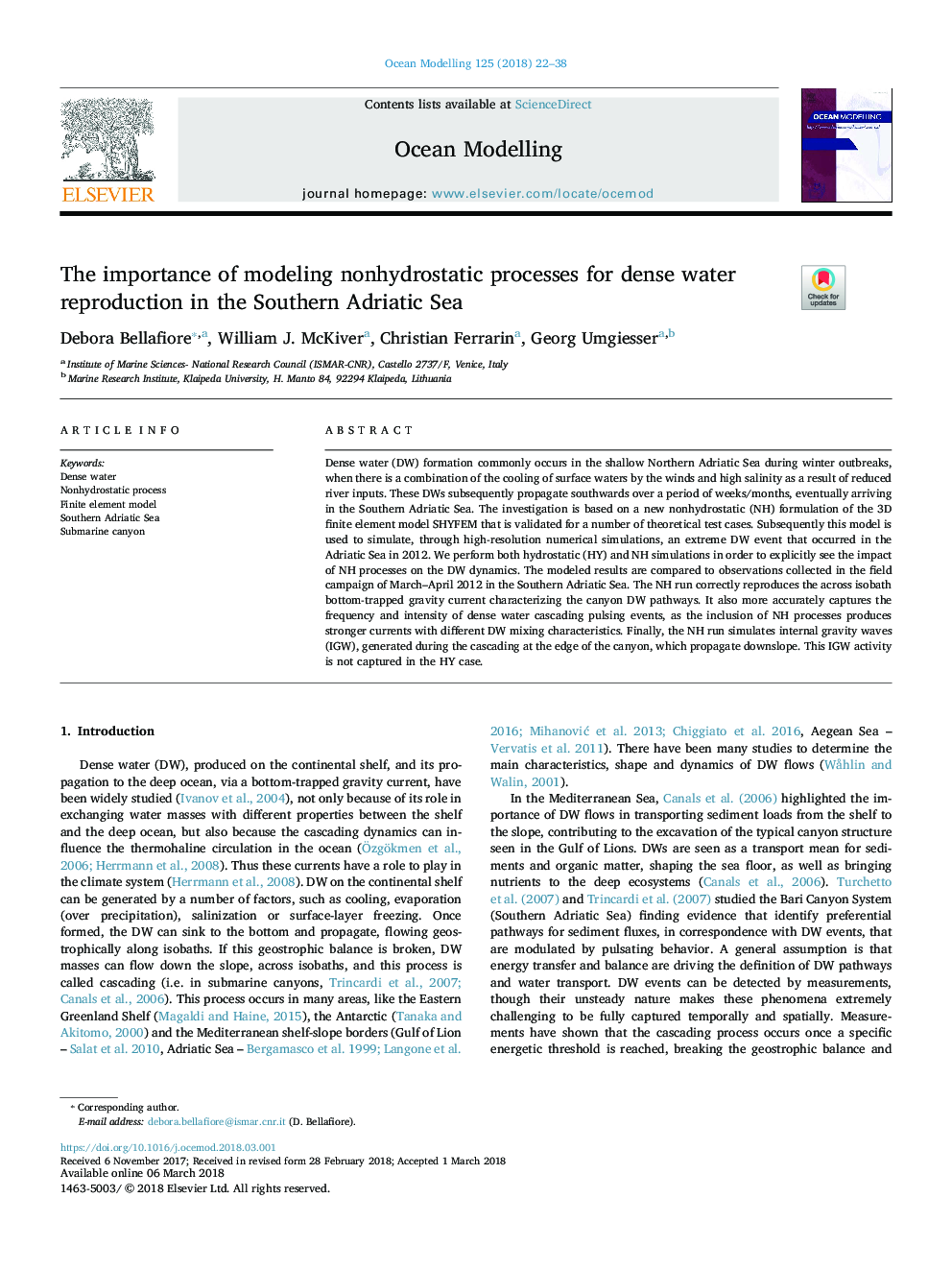| Article ID | Journal | Published Year | Pages | File Type |
|---|---|---|---|---|
| 8886510 | Ocean Modelling | 2018 | 17 Pages |
Abstract
Dense water (DW) formation commonly occurs in the shallow Northern Adriatic Sea during winter outbreaks, when there is a combination of the cooling of surface waters by the winds and high salinity as a result of reduced river inputs. These DWs subsequently propagate southwards over a period of weeks/months, eventually arriving in the Southern Adriatic Sea. The investigation is based on a new nonhydrostatic (NH) formulation of the 3D finite element model SHYFEM that is validated for a number of theoretical test cases. Subsequently this model is used to simulate, through high-resolution numerical simulations, an extreme DW event that occurred in the Adriatic Sea in 2012. We perform both hydrostatic (HY) and NH simulations in order to explicitly see the impact of NH processes on the DW dynamics. The modeled results are compared to observations collected in the field campaign of March-April 2012 in the Southern Adriatic Sea. The NH run correctly reproduces the across isobath bottom-trapped gravity current characterizing the canyon DW pathways. It also more accurately captures the frequency and intensity of dense water cascading pulsing events, as the inclusion of NH processes produces stronger currents with different DW mixing characteristics. Finally, the NH run simulates internal gravity waves (IGW), generated during the cascading at the edge of the canyon, which propagate downslope. This IGW activity is not captured in the HY case.
Related Topics
Physical Sciences and Engineering
Earth and Planetary Sciences
Atmospheric Science
Authors
Debora Bellafiore, William J. McKiver, Christian Ferrarin, Georg Umgiesser,
